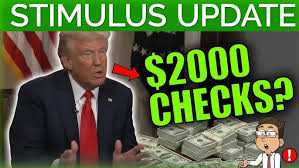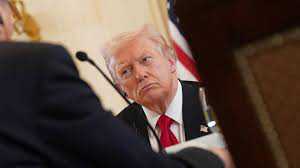Trump's promise of a $2,000 tariff rebate on Truth Social has sparked widespread online discussion.
"People will receive at least $2,000 each (excluding high-income earners!), and this money will be paid to everyone," President Trump posted on Truth Social on November 9, reiterating his idea of distributing a $2,000 tariff rebate to most Americans.

Two days later, White House Press Secretary Carolyn Levitt told reporters on November 12, "The President has made it clear that he wants to achieve this goal," adding that Trump is "committed" to pushing forward with the plan.
However, this is the third time Trump has made a similar promise this year—from a $600 tariff rebate in July, to an earlier $5,000 "government efficiency bonus," and now the $2,000 tariff rebate, none of these promises have been fulfilled.
I. From Social Media to the White House Podium
Trump first proposed the concept of a $2,000 dividend in a Truth Social post on November 9th.
He wrote, "Those who oppose tariffs are fools!" and then immediately proposed the dividend plan.
This idea stemmed from using tariff revenue to pay money to Americans. Trump had mentioned in August, "We're collecting so much money, we're very likely to pay dividends to the American people."
However, this idea became more complicated as Trump's trade policies faced Supreme Court scrutiny.
II. Current Status
According to data from the U.S. Treasury Department, the government has collected over $220 billion in tariff revenue, including old tariffs that existed before Trump took office.
However, the IRS reports that approximately 163 million Americans filed tax returns in 2024.
If every claimant received $2,000, the total cost would reach approximately $326 billion.
Erica York, Vice President of Federal Tax Policy at the Tax Foundation, estimates that even with an income cap of $100,000, approximately 150 million adults would still be eligible, at a cost of around $300 billion.

III. Official Response
In a November 9th interview with ABC News' "This Week," Treasury Secretary Scott Bessant appeared cautious when pressed by reporters.
He stated that no formal proposal had been submitted and hinted that the $2,000 mentioned by Trump could "come in several forms," including through tax breaks or other forms of compensation.
Bessant specifically mentioned: "It could be tax cuts we're seeing on the president's agenda—tax-free tips, tax-free overtime pay, tax-free Social Security, deductible auto loans."
This statement suggests that the government may be considering alternatives to direct cash payments.
When administration officials were directly asked about the timing and method of the payment, they could not provide specific details, only indicating that Trump's economic advisory team was studying the plan.

IV. Be Cautious
As discussions about the $2,000 stimulus checks have gone viral on social media and news platforms, fraudulent information has also surged.
The IRS continues to warn taxpayers about fake stimulus payment messages designed to trick people into sharing personal information.
These messages are typically spread via email, text message, and social media.
The IRS emphasizes that they will never proactively contact taxpayers via email, text message, or social media.





